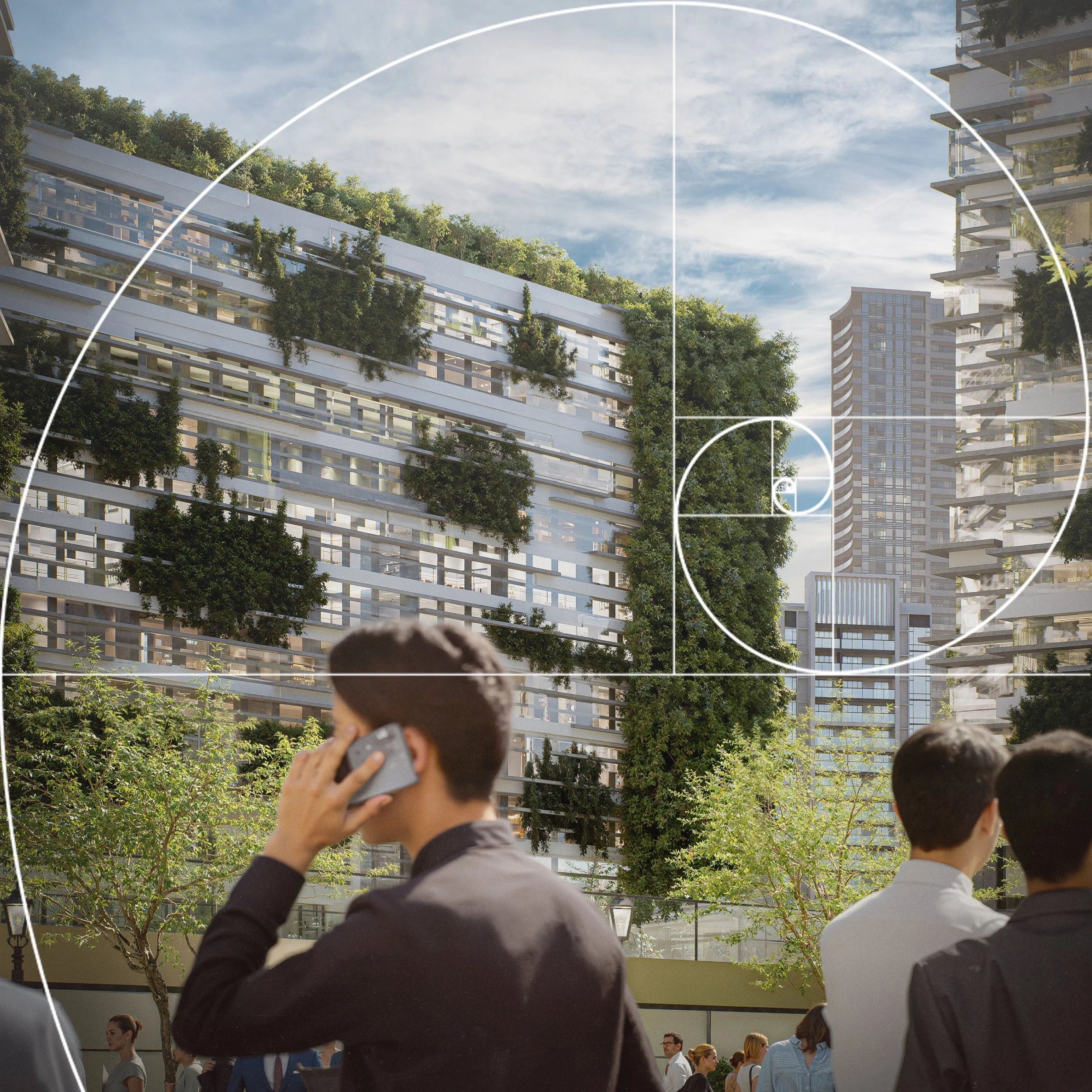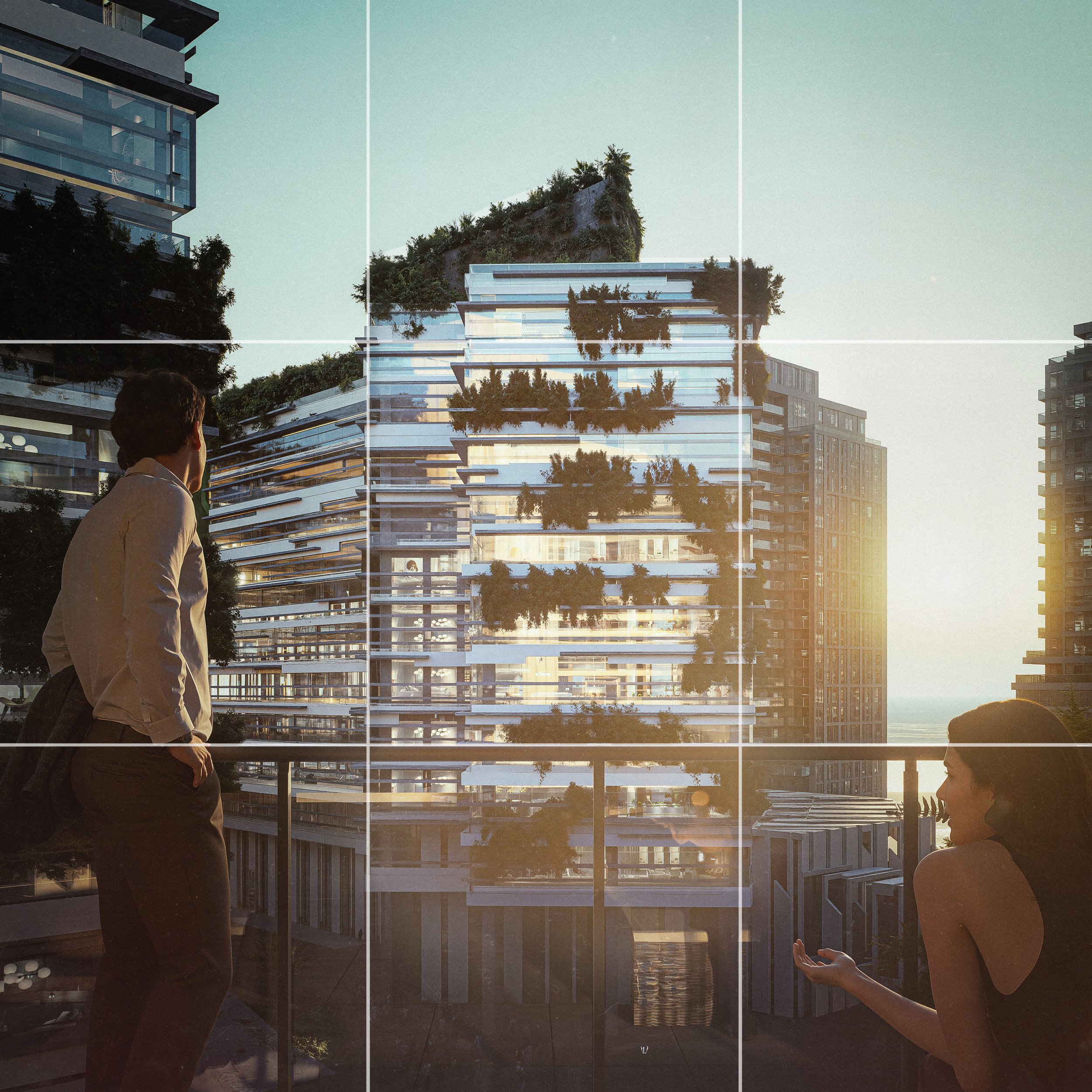The Art of Composition
Composition is the heartbeat of visual storytelling. It is what gives structure and emotion to an image, guiding the viewer’s eye and shaping how a space is experienced. Every choice we make, from light and balance to framing and perspective, contributes to a narrative that goes beyond technical accuracy. In architecture, composition is what allows a building to communicate its purpose, scale, and atmosphere before anyone steps inside.
In architectural visualisation, composition is where design and storytelling meet. The placement of elements, the rhythm of light and shadow, and the relationship between scale and space all determine how believable and engaging a scene feels. A well-composed image does more than show architecture; it invites the viewer to inhabit it, to sense the materials, the depth, and the flow of a space. Every object, every line, every reflection has a role in the story being told.
Fibonacci
Using the Fibonacci spiral creates natural balance and flow — guiding the viewer’s eye effortlessly to what matters most.
Photography teaches us to look with intention. Translating that awareness into 3D work allows images to feel more alive and authentic. The principles that make a photograph compelling, such as clarity of focus, spatial hierarchy, and mood, are equally relevant in digital imagery. By observing how light falls across a surface, how shadows define volume, and how the eye moves through a scene, we can create images that are more than representations — they become experiences.
Advancing technical ability makes it possible to refine every detail, but composition reminds us to never lose sight of the whole. In digital environments, it is easy to focus on textures, post-processing, or minor adjustments, and forget that the overall image must communicate a feeling, an atmosphere, or a story. Thoughtful composition ensures that all technical decisions support the narrative and enhance the viewer’s understanding of the space.
Guide the Eye
Lines have power. They direct attention, create depth, and give purpose to every frame.
Leading lines subtly draw the viewer into the story.
There are many tools and approaches to composition. The rule of thirds, leading lines, symmetry, and the use of negative space all provide structure, but they are not rules to be followed blindly. Each scene has its own demands, and every choice should respond to the story being told. Even small adjustments to camera angle, lens choice, or depth of field can completely change how an image is perceived.
Ultimately, composition is not just about arranging elements within a frame. It is about creating balance between precision and feeling, form and narrative. It is about guiding the viewer’s experience while maintaining authenticity and visual clarity. When technical skill and artistic sensibility work together, images become more than accurate renderings. They resonate on a deeper level, inviting viewers to engage, imagine, and connect with the space. Composition is what transforms an image from a picture into a story, and it is at the heart of everything we create in architectural visualisation.
Find the Balance
The rule of thirds is a timeless guide to harmony.
By placing key elements along its intersections, you create tension, energy, and visual appeal.




